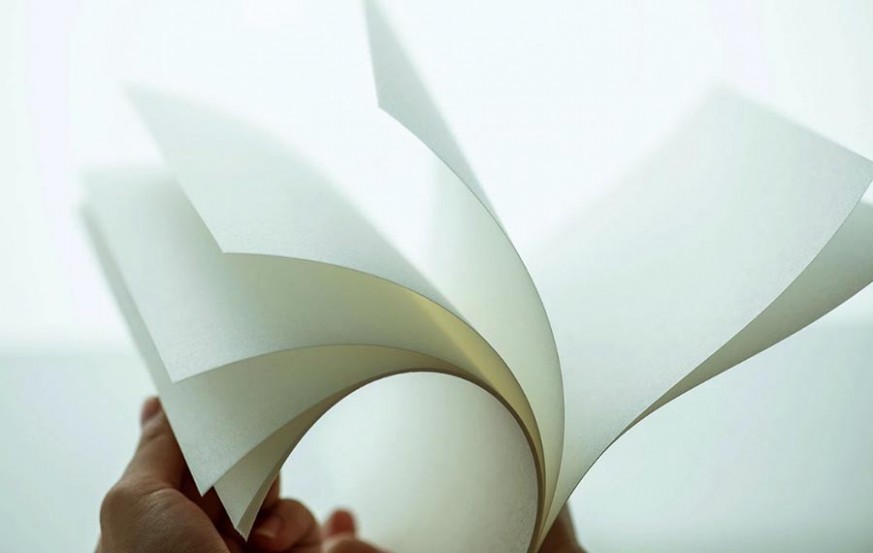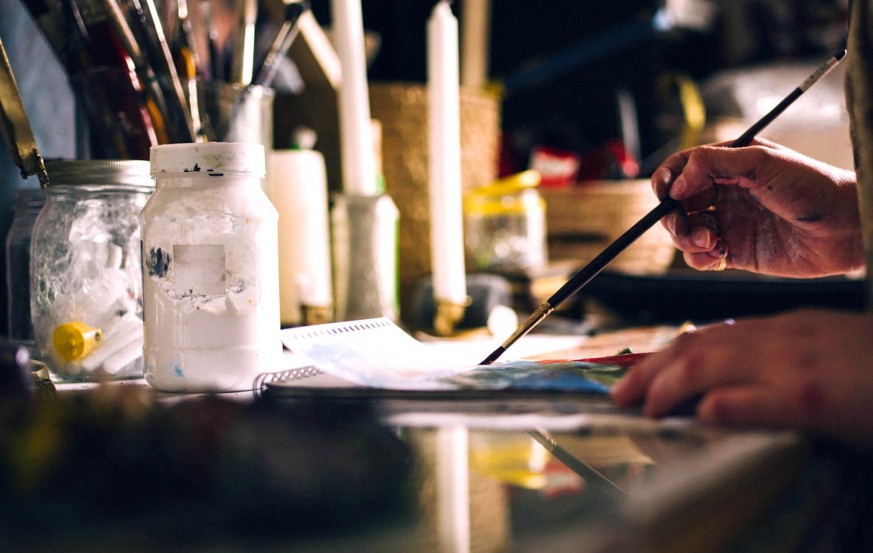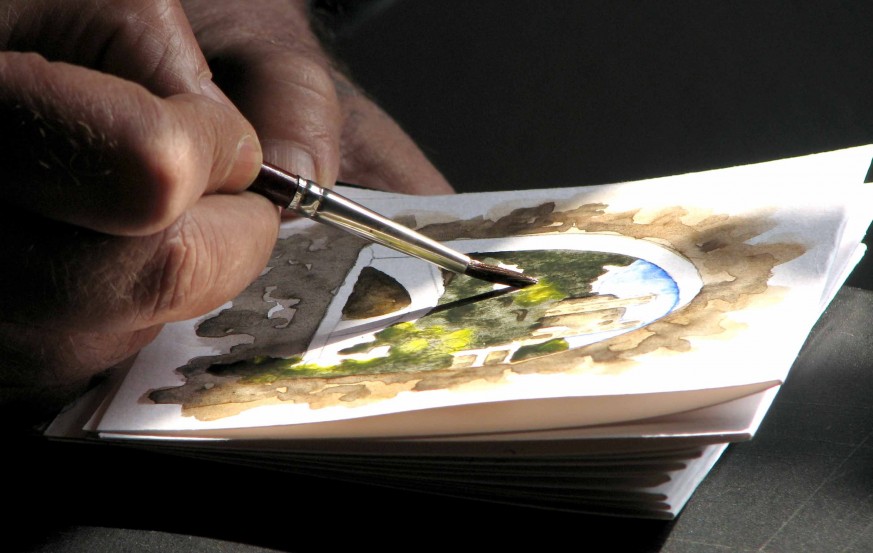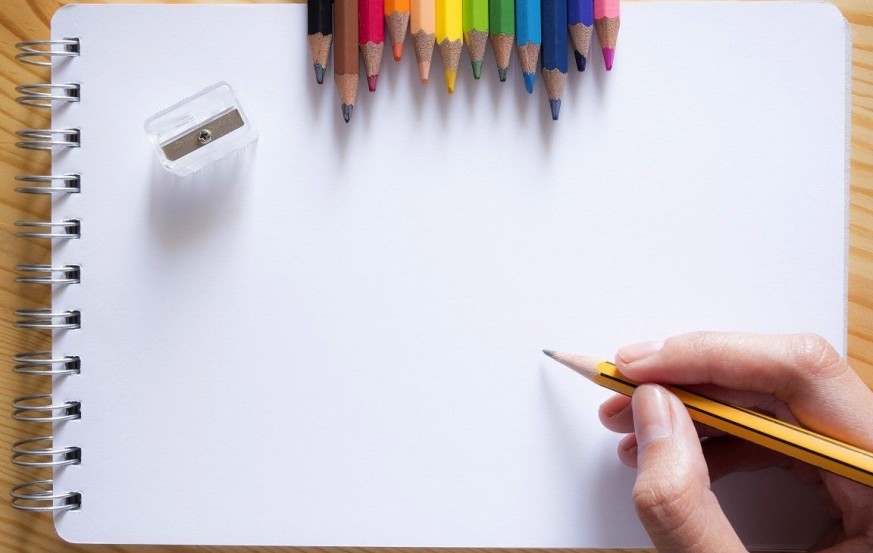Shopping Cart
No products
Prices are tax included
Papers, Pads & Journal
-
Shop by Category
- Juan to Paint Package
-
SALE and Promo Products
- ANGELUS GLITTERLITES
- Paper and Pads
- DERIVAN BLOCK INK
- DERIVAN CHALLENGE ACRYLIC PAINT
- DERIVAN 3D KINDYGLITZ
- DERIVAN BRUSH & FINGER COLORS
- DERIVAN ERGOPRO ILLUSTRATION MARKERS
- DERIVAN INK
- DERIVAN LIQUID PENCILS
- DERIVAN MATISSE INK
- DERIVAN ARTIST WATERCOLOR PAINTS
- DERIVAN SCREEN INK
- MAIMERI CLASSICO OIL
- MAIMERI MEDITERRANEO OIL
- GAMBLIN FASTMATTE ALKYD OIL
- JACK RICHESON SHIVA OIL
- JACK RICHESON SHIVA OIL MEDIUM
- PICASSO ACRYLIC COLOR
- WEBER PRIMA ACRYLIC
- WEBER OIL MEDIUM
- WEBER PROFESSIONAL PERMALBA OIL
- WEBER PRIMA OIL
- SCULPEY SPECIALTY CLAY AND TOOLS
- ARTRESIN
- PAINTING TOOLS & ACCESSORIES
- CERNIT OVEN HARDENING MODELING CLAY
- XDT ARTIST PENCIL
-
Acrylic Medium
- Createx Acrylic & Airbrush Medium
- Derivan Matisse Medium
- Golden Acrylic Mediums and Varnish
- Golden Open Acrylic Medium
- Kulay Acrylic Medium
- Grumbacher Acrylic Medium and Varnish
- Liquitex Medium and Varnish
- Lukas Acrylic Medium
- Maries Acrylic Mediums
- Maimeri Acrylic Medium and Varnish
- Pebeo Acrylic Medium
- Sakura Acrylic Medium
- R&F Gesso & Grounds
- Raw Materials
- Weber Acrylic Medium
- Winsor & Newton Acrylic Medium and Varnish
-
Acrylic Paint
- Createx Airbrush Colors
- Createx Wicked Colors
- Derivan Brush & Finger Color
- Derivan Matisse Fluid Acrylic
- Derivan Student Acrylic Paint
- Derivan Challenge Acrylic Paint
- Golden Fluid Acrylic
- Golden Heavy Body Acrylic
- Golden High Flow Acrylic
- Golden Open Acrylic
- Golden SoFlat Matte Acrylic
- Grumbacher Academy Acrylic
- Kulay Acrylic Colors
- Liquitex Acrylic Spray Paint
- Liquitex Basics Acrylic Studio
- Liquitex Heavy Body Acrylic
- Maimeri Acrilico Acrylic
- Maries Fine Quality Acrylic
- Old Holland Classic Acrylics
- Pebeo Studio Acrylic
- Sakura Acrylic
- Weber Prima Acrylic
- Winsor & Newton Galleria Acrylic
- Picasso Acrylic Color
- Airbrush & Compressor
-
Art & Crafts
- Angelus Glitterlites
- Clear & Metallic Grit
- 3D Doodle PLA Filament:
- Colleen Poster Color
- Derivan 3D Kindyglitz
- Derivan Brush & Finger Color
- Derivan Fabric Art Marker
- Flourescent Powder
- Gamblin Dry Pigments
- Gold & Metallic Leafing
- Kulay Dye Powder
- Metallic Pigment
- Kulay Pigment Powder
- Pebeo Deco 3D Paint
- Plastic Texture Beads
- Rigid Chips and Flakes
- Sakura Poster Color
- Sculpey Keepsake Clay Kits
- Air Dry Clay
- Variet Clay for All Ages
- Jovi Decor Paint for Clay
-
Brush
- Baohong Flat Brush
- Berkeley Brush
- Diamant Brush
- Eterna Brush
- Grumbacher Black Diamond Brush
- Grumbacher Gainsborough Brush
- Hans Brush
- Jack Richeson Extreme Kolinsky Brush
- Jack Richeson Oil & Acrylic Brush
- Jack Richeson Sash Brush
- Jack Richeson Watercolor Brush
- Kulay Art Materials Artist Brush
- Maries Martol Brush
- Old Holland Brush
- Pebeo and Deco Lotus Brush
- Phoenix Brush
- Sakura Brush
- Tiger TOP Brush
- Weber Museum Topaz Brush
- Weber Professional Permalba Bristle & Pure Red Sable Brush
- Winsor & Newton Foundation Brush
- XDT Quality Brush
-
Canvas & Boards
- Abstrak Artists Canvas Stretched & Panel with Removable Frame
- Abstrack Black Stretched Canvas
- Abstrack Stretched Canvas , Panel & Circular
- Berkeley 3D Stretched Canvas
- Berkeley Canvas Board Panel
- Berkeley Stretched Canvas
- Diamant Stretched & Panel Canvas
- Illustration & Foam Boards
- Jack Richeson Artist Heavy Duty Stretcher Bar
- Jack Richeson Artist Lightweight Stretcher Bar
- Pebeo Stretched Canvas
- Phoenix Artist Canvas Panel
- Phoenix Artist Stretched Canvas
- Primed & Unprimed Canvas Rolls
- Stationery White Gesso Art Board & Circular Wooden Panel Board
- Tiger Stretched Canvas
- Tiger Panel Board
- TOPS Artist Archival Canvas
- Tops Circular Primed Canvas
- Tops Museum Wrap Canvas
- Tops Pine Stretcher Bars
- TOPS Studio Stretched Canvas
- Artist Wood Panel Canvas
-
Charcoal, Graphite Stick & Pencils
- Charcoal Pencil & Stick
- Colleen Drawing Pencil
- Cretacolor Charcoal & Graphite
- COYC Water-soluble Sketching Stick
- Derivan Liquid Pencil
- Derwent Drawing
- Derwent Charcoal Pencil
- Faber-Castell Pitt Charcoal Pencil
- Faber Castell Graphite Pencil
- Lefranc & Bourgeois Conte Charcoal Pencil & Graphite Lead
- Lefranc & Bourgeois Conte Sketching Pencil
- Maries Graphite Sticks
- Phoenix Drawing Pencil
- Fixative for Charcoal, Pastel & Pencil
-
Colored & Watercolor Pencils
- Colleen Colored & Watercolor Pencil
- Derwent Colorsoft Pencil
- Derwent Water Soluble Metallic Pencil
- Derwent Signature Watercolor Pencil
- Derwent Studio Colored Pencil
- Derwent Artist Colored Pencil
- Derwent Signature Color Pencil
- Derwent Metallic Color Pencil
- Derwent Inktense
- Derwent Watercolor Pencil
- Derwent Coloursoft Colored Pencil
- Faber Castell Polychromos
- Faber Castell Water & Color Pencil
- Lion City Dermatograph Pencil
- Maries Martol Colored & Watercolor Pencil
- Prismacolor Colored Pencil
- XDT Artist Pencil
- Derwent Aquatone Watercolor
- Fixative for Charcoal, Pastel & Pencil
- Easel
- Encaustic Paint
- Face & Body Colors
- Framing & Packaging
- Gesso & Grounds
- Glass, Tile & Ceramic
- Gold & Metal Leaf
- Gouache Tempera & Decorative
- Ink & Calligraphy
- Leather & Fabric Paint
-
Oil Medium
- Gamblin Oil Medium and Varnish
- Grumbacher Oil Medium and Varnish
- Jack Richeson Shiva Oil Medium
- Kulay Oil Medium
- Lefranc & Bourgeois Oil Mediums
- Lefranc & Bourgeois Louvre Oil Medium
- Lukas Oil Medium
- Maries Oil Medium and Varnish
- Maimeri Oil Medium
- Michael Harding Oil Medium
- Old Holland Oil Medium and Varnish
- Pebeo Oil Medium
- R&F Encaustic Medium (oil med)
- Weber Oil Medium
- Winsor & Newton Oil Medium and Varnish
- Winsor & Newton Water Mixable Oil Medium
-
Oil Paint
- Gamblin 1980 Oil
- Gamblin Artist Oil
- Gamblin FastMatte Alkyd Oil
- Grumbacher Academy Oil
- Grumbacher Pre-Tested Oil
- Jack Richeson Shiva Oil
- Lukas 1862 Oil
- Lukas Berlin Water Mixable Oil
- Lukas Terzia Oil
- Magi Wap Oil
- Maimeri Classico Oil
- Maimeri Mediterraneo Oil
- Maries Master Oil
- Maries Oil Color
- Michael Harding Premium Oil Color
- Old Holland Classic Oil Colours
- Pebeo XL Studio Oil
- Picasso Oil Colour
- R&F Encaustic Paints
- Raw Material for Oil
- Schmincke Akademie Oil
- Schmincke Mussini Oil Colors
- Schmincke Norma Artist Oil
- The Portrait Institute by J. Sanden
- Weber Prima Oil
- Weber Professional Permalba Oil
- Weber Water Mixable Oil
- Williamsburg Handmade Oil Colors
- Winsor & Newton Artisan Water Mixable Oil
- Winsor & Newton Artist Oil
- Winsor & Newton Fine Oil (China)
- Winsor & Newton Griffin Alkyd
- Winsor & Newton Winton Oil
- Oil Stick
-
Markers & Pens
- Artline 400XF Paint Marker
- Artline Supreme Brush Marker
- Faber Castell Pitt Artist Pens
- Pebeo Acrylic Markers
- Molotow ONE4ALL Acrylic Marker
- Derivan ErgoPro Illustration Marker
- Liquitex Paint Marker Fine Tip
- Marie’s Black Micro-Line Pen
- Pebeo 4Artist Marker
- Sakura Pigma Micron Pen
- Sakura Koi Coloring Brush Pen
- Sakura Pigma Brush Pen
- Spectra Alcohol Marker
- Painting Varnish Brush/Spray
- Painting Palette
-
Painting Tools & Accessories
- Art Book
- Atomizer
- 3D Doodle PLA Filament
- Brush Holder & Washer
- Blending Stumps Eraser and Sharpeners
- Canvas Pliers
- Carrying Case
- Color Wheel
- Cutter, Knife & Blades
- Empty Tube, Sealable Cups & Refillables
- Glue & Tapes
- Gun Tacker
- Mat Cutting Board
- Palette Cup
- Rulers Compass & Calipers
- Sketch Box
- Scissors
- Tube Wringer
- Studio Essentials
- Palette Knife
- Papers, Pads & Journal
-
Pastels
- Derwent Pastel Pencil
- DONG-A Oil Pastel
- Jack Richeson Handmade Soft Pastels
- Jack Richeson Medium Soft Pastels
- Jackson Soft Pastel
- Lefranc & Bourgeois Conte Carres Crayons
- Lefranc & Bourgeois Conte Pastel Pencil
- Lefranc & Bourgeois Conte Soft Pastel
- Maimeri Classico Fine Oil Pastel
- Maries Masters Pastel
- Mungyo Artist Soft Pastel
- Mungyo Oil Pastel
- PanPastel
- Sakura Oil Pastel
- Schmincke Exta-Soft Pastel
- Simbalion Pastel
- Unison Colour Handmade Soft Pastel
- Fixative for Charcoal, Pastel & Pencil
- Printmaking
-
Sculpture & Pottery
- Air Dry Clay
- ArtResin
- Cernit Oven Hardening Modeling Clay
- ComposiMold
- Clay Molds
- Resin for Fiberglass
- Jack Richeson Armature Wire
- Nara Polymer Clay
- Molding Materials
- Proto Polymer Clay
- Pottery Tools and Sculpture Tools
- Specialty Clay
- Sculpey Keepsake Clay Kits
- Variety Clays for All Ages
- Sculpey Pluffy & Instructional Book
- Stone Curving Tools
- Wooden Mannequin & Models
- Sculpting Tool
- Weber Artist Scultping Tool Wire End Metal
- Wood Carving Tools
- Weber Museum Artist Sculpting Tool Boxwood
- Kulay Sculpture Skin Texture Roller
- Raw Materials
- Tube Wringer
-
Watercolor
- Daniel Smith Extra Fine Watercolor
- Daniel Smith Extra Fine Watercolor Sticks
- Derivan Artist Watercolor Paint
- Lukas Aquarelle Studio
- Maimeri Venezia Extra Fine Watercolor
- Maries Masters Watercolor
- Maries Water Colour Sets
- Old Holland Classic Watercolors
- Pebeo Studio Watercolor
- Prang Watercolor Paint
- QoR Artist Watercolor
- Schmincke Akademie Aquarell
- Sakura Watercolor
- Schmincke Horadam Aquarell
- Simbalion Watercolor
- Winsor & Newton Artist Watercolor
- Winsor & Newton Fine Watercolor (China)
- Winsor & Newton Cotman Watercolor
- Watercolor Medium
-
Shop by Brand
- Abstrack
- Angelus
- ArtResin
- Art Spectrum
- AUREUO
- AVES®
- Badger Air Opaque
- Baohong Artist Watercolor Paper
- Berkeley
- Canson
- Colleen
- Createx Colors
- Creative Mark
- Daniel Smith
-
Derivan
- Derivan 3D Kindyglitz
- Derivan Block Ink
- Derivan Brush & Finger Colors
- Derivan Challenge Acrylic Paint
- Derivan Dry Medium
- Derivan ErgoPro Illustration Markers
- Derivan Fabric Art Marker
- Derivan Fabric Art Paint
- Derivan Face & Body Paint
- Derivan Face & Body Paint Tools
- Derivan Ink
- Derivan Liquid Pencils
- Derivan Matisse Fluid Acrylic
- Derivan Matisse Ink
- Derivan Matisse Medium
- Derivan Pads
- Derivan Refillables
- Derivan Student Acrylic Paints
- Derivan Artist Watercolor Paints
- Derivan Screen Ink
- Derwent
- Elmers
- Faber Castel
- Fabriano
- Gelli Arts®
- Gamblin Artist Colors
- Golden Artist Colors
- Grumbacher
- HIGGINS®
- Isu
-
Jack Richeson & Co. Inc
- Jackson Pastel Set
- Jack Richeson Art Tools
- Jack Richeson Artist Heavy Duty Stretcher Bar
- Jack Richeson Artist Lightweight Stretcher Bar
- Jack Richeson Extreme Kolinsky 7778 Brush
- Jack Richeson Handmade Soft Pastel
- Jack Richeson Medium Soft Pastel
- Jack Richeson Oil & Acrylic Brush
- Jack Richeson Oil Medium
- Jack Richeson Shiva Artist Oil Paint Stick
- Jack Richeson Shiva Oil
- Jack Richeson Sash Brush
- Jack Richeson Watercolor Brush
- Jack Richeson Powder Paint
- Jack Richeson Kolinsky 7777 Brush
- Kulay Art Materials
-
Lefranc & Bourgeois
- Lefranc & Bourgeois Brush
- Lefranc & Bourgeois Conte Carres Crayons
- Lefranc & Bourgeois Conte Charcoal Pencil & Graphite Lead
- Lefranc & Bourgeois Conte Pastel & Watercolor Pencils
- Lefranc & Bourgeois Conte Sketching Pencils
- Lefranc & Bourgeois Conte Soft Pastels
- Lefranc & Bourgeois Louvre Oil
- Lefranc & Bourgeois Louvre Medium
- Lefranc & Bourgeois Oil Mediums
- Legion Paper
- Liquitex
- Lukas
- Magi Wap
- Maimeri
-
Maries
- Marie’s Black Micro-Line Pen
- Maries Martol Brush
- Maries Martol Watercolor Pencil
- Maries Masters Artists Oil
- Maries Oil Medium and Varnish
- Maries Organic & Inorganic Pigment
- Maries Masters Watercolor
- Maries Fine Quality Acrylic
- Maries Fabric Color
- Maries Masters Pastel
- Maries Engraving Colour
- MARIES OIL COLOR
-
Martin F. Weber Co.
- Weber Acrylic Medium
- Weber Prima Acrylic
- Weber Professional Permalba Bristle & Sable Brush
- Weber Museum Topaz Brush
- Weber Oil Medium
- The Portrait Institute by J. Sanden
- Weber Professional Permalba Oil
- Weber Prima Oil
- Weber Water Mixable Oil
- Weber Museum Artist Sculpting Tool Boxwood
- Weber Museum Artist Sculpting Tool Wire End Metal
- Weber Charcoal
- Art Book Leonardo Collection
- Masterson Art
- Michael Harding
- Mijello
- Mungyo
- Old Holland
- PanPastel
- Pebeo
- Phoenix Art
- Prismacolor
- Reeves
- R&F Handmade Paints
- Sakura Color Products
- Schmincke Künstlerfarben
- Sculpey
- Shuangfeng Stationery
- Simbalion
- Snazaroo
- Tajima
- Tiger
-
The Oil Paint Store Products
- TOPS Artist Archival Canvas
- TOPS Artist Blender Brush
- TOPS Circular Primed Canvas
- TOPS Colored and Metal Leaf
- TOPS Fiberglass & Resin
- TOPS Mannequin & Models
- TOPS Metal Sculpting Tools
- TOPS Pine Stretcher Bars
- TOPS Primed & Unprimed Canvas Cloth
- TOPS Quality Stretcher Canvas
- TOPS Raw Materials
- TOPS Stone Curving Tools
- TOPS Studio Stretched Canvas
- Tri Art
- Unison Colour Handmade Soft Pastel
- Williamsburg Handmade Oil
-
Winsor & Newton
- Winsor & Newton Acrylic Medium
- Winsor & Newton Galleria Acrylic
- Winsor & Newton Foundation Brush
- Winsor & Newton BrushMarker
- Winsor & Newton Pigment Marker
- Winsor & Newton ProMarker
- Winsor & Newton Oil Medium
- Winsor & Newton Water Mixable Oil Medium
- Winsor & Newton Artisan Water Mixable Oil
- Winsor & Newton Artist Oil
- Winsor & Newton Fine Oil (China)
- Winsor & Newton Griffin Alkyd
- Winsor & Newton Winton Oil
- Winsor & Newton Oil Bar
- Winsor & Newton Fine Watercolor (China)
- Winsor & Newton Calligraphy Ink
- XDT
- Special Brands
Tags
Blog Categories
Papers, Pads & Journal

Paper that has a neutral or basic pH (7 or slightly greater). It can be made from any cellulose fiber as long as the active acid pulp is eliminated during processing. It is also lignin and sulfur free. Acid-free paper addresses the problem of preserving documents for long periods.
Paper made from wood-based pulp that has not had its lignin removed goes yellow and deteriorates over time. When exposed to light and/or heat, the molecules in the acidic paper will break down even faster. It was only in the 1930s that the effects of wood-pulp paper became known, when William Barrow (a librarian) published a report about the deterioration of acidic paper in the libraries. For fear of the gradual disintegration of written materials, measures have been taken to improve the quality of paper.
Paper that has a neutral or basic pH (7 or slightly greater). It can be made from any cellulose fiber as long as the active acid pulp is eliminated during processing. It is also lignin and sulfur free. Acid-free paper addresses the problem of preserving documents for long periods.
Paper made from wood-based pulp that has not had its lignin removed goes yellow and deteriorates over time. When exposed to light and/or heat, the molecules in the acidic paper will break down even faster. It was only in the 1930s that the effects of wood-pulp paper became known, when William Barrow (a librarian) published a report about the deterioration of acidic paper in the libraries. For fear of the gradual disintegration of written materials, measures have been taken to improve the quality of paper.
Subcategories
For Oil & Acrylic
For Pastel
For Watercolor
For Charcoal & Drawings
Sketch paper is often lighter weight, while drawing paper is conversely a bit heavier in weight. With drawing papers typically being heavier, the artist is able to work on the sheet longer and refine work. The paper can usually stand up to more erasing and more fine detail work.
Sketch paper is typically less expensive, giving you lots of sheets to practice with in your pad. Drawing paper typically will be a bit more expensive than Sketch paper and will usually contain fewer sheets in a pad.
Both sketch and drawing papers are intended for use with dry media such as graphite, charcoal and conte. However, drawing papers typically have a toothier surface, allowing for enhanced variability of tone. Many artists reserve mediums like pastels and colored pencils for drawing paper versus sketch paper since those are typically intended for finished art and the deeper tooth of a drawing paper allows artists to get more depth of color. The toothier surface of a drawing sheet is better for “grabbing” dry media, which allows an artist to create more intense areas of light and dark than what could be achieved on a sketch surface. An artist will also see different results when using various shading techniques such as cross hatching, using a blending stump, or other methods, so it's best to test out different papers and see what your own individual preferences are.
Journal & Notebooks
Art journaling has a long-standing artistic tradition. Artists through the centuries have kept notebooks in which they sketched, practiced, experimented, and recorded themselves. Vincent vanGogh kept notebooks. Picasso and DaVinci were two other prolific sketchbook keepers. You are in good company! If you feel like exploring famous and not-so-famous artists’ sketchbooks, go to Artists’ Sketchbooks Online.
You might be thinking, I’m not an artist! Well, I beg to differ. You are an artist, and you can create an art journal without drawing or sketching. In fact, I’m lousy at drawing, so I use collage techniques to express myself. Stamp images, vintage photographs and magazine images make up for the fact I can’t draw.























